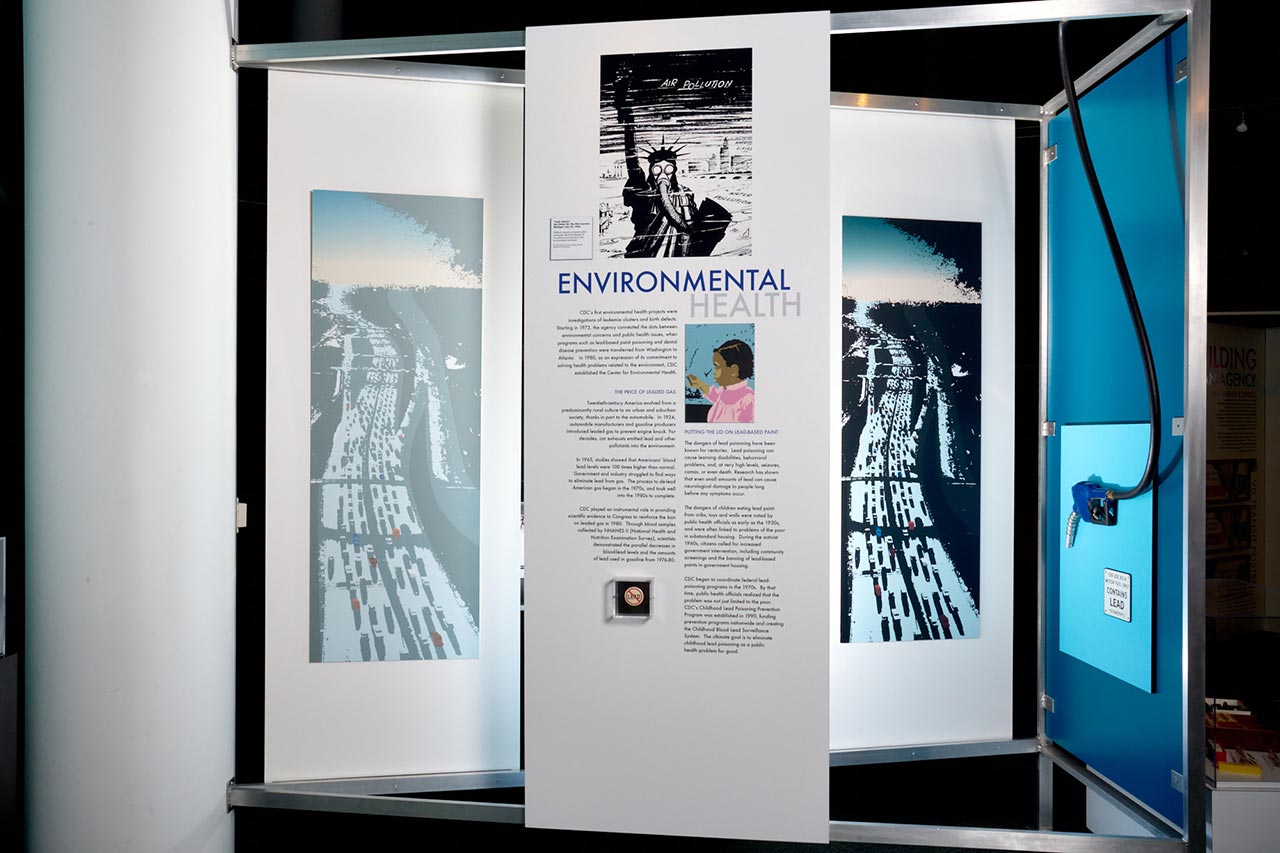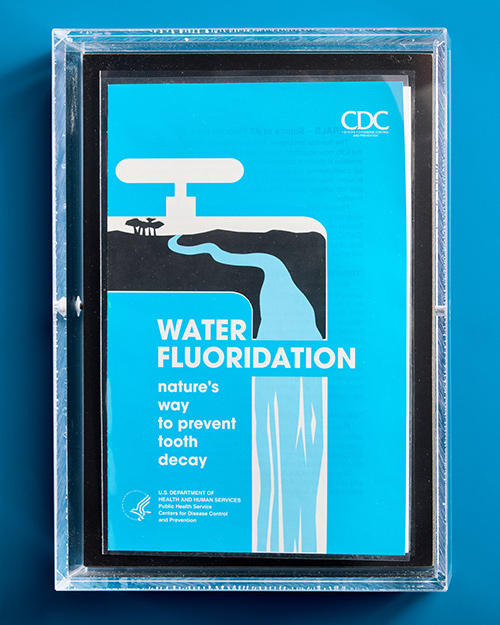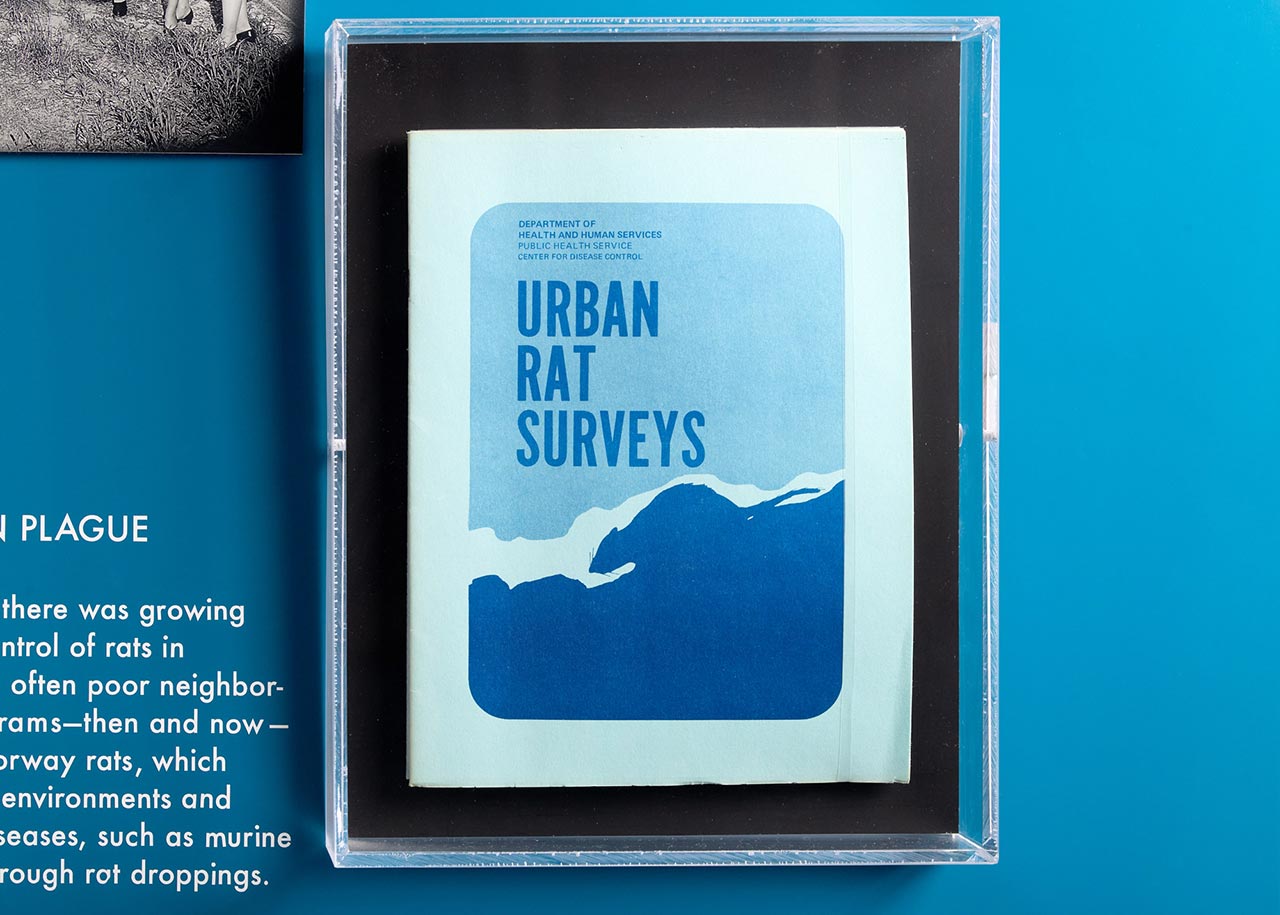The David J. Sencer CDC Museum will re-open with new visitation protocols on January 2nd, 2026. All visitors must make advanced reservations. Walk-in visits are no longer permitted.
The following information is required while making reservations:
- Visitors to provide first, middle, and last name
Visitors 18 and over will also need to submit:
- Date of birth
- Citizenship (Select U.S. or non-U.S. citizen)
- Government-issued valid (not expired) REAL ID number or passport number
Bring confirmation email(s) for museum visit.
Environmental Health
This section discusses CDC’s early work in studying environmental health. A satirical image from the 1960s about “Lady Liberty” shows the Statue of Liberty wearing a gas mask. The channel behind her and the visible land are filled with trash. The air is dark from pollution. Small factories in the background are belting out more smog. The image shows how pollution had become so commonplace and how environmental issues can harm everyone. CDC’s first projects that addressed environmental health were investigations of leukemia clusters and birth defects. Soon after, CDC began connecting the dots between environmental concerns and public health concerns such as lead-based paint poisoning, dental disease, and the presence of rodents in urban communities.

Lead
One major environmental health concern was Americans’ blood-lead levels. Lead is a naturally occurring element that is useful in some applications but is highly toxic to humans and some other animals. No safe blood-lead level in children has been identified. Even low levels of lead in blood have been shown to affect IQ, ability to pay attention, and academic achievement. Moreover, effects of lead exposure cannot be corrected.
The introduction of leaded gas in 1923 resulted in a drastic increase in American blood-lead levels and the amount of lead in the environment. By 1965, studies showed that Americans’ blood-lead levels were 100 times higher than normal. After Congress banned leaded gas, a CDC study showed the effectiveness of the ban by demonstrating blood-lead levels were drastically lowered. This is a great public health success story and shows the power that good data can have on public health policy.
Water Fluoridation

Seen here is one of the epidemiological studies from the 1930s and 1940s that confirmed that fluoride, a substance naturally found in water, could prevent cavities. To help improve the oral health of the U.S., CDC encouraged Grand Rapids, Michigan to become the first American city to add fluoride to its water in 1945. Since 1975, CDC has been responsible for encouraging the effective use of fluoride in water and promoting oral health through national prevention and technical assistance programs like teaching children to brush their teeth. As a result of CDC’s work, more than 67% of Americans receive fluoridated water today and tooth decay has drastically declined over the last 60 years.

The Urban Rat Survey
As part of the Great Society administration’s Rat Control Bill of 1967, CDC was tasked with control of rats. Seen here is the Urban Rat Survey, a guide for determining the rat population of an area. Rats are known vectors, or spreaders, of diseases such as plague.
Worldwide, rats and mice spread over 35 diseases. These diseases can be spread to humans directly; through handling of rodents; through contact with rodent feces, urine, or saliva; or through rodent bites. Diseases carried by rodents can also be spread to humans indirectly: through ticks, mites, or fleas that have fed on an infected rodent. The Urban Rat Survey shown here was a tool developed by CDC for local health departments and cities to use. Today, CDC continues to assist state and local health departments with environmental health issues.